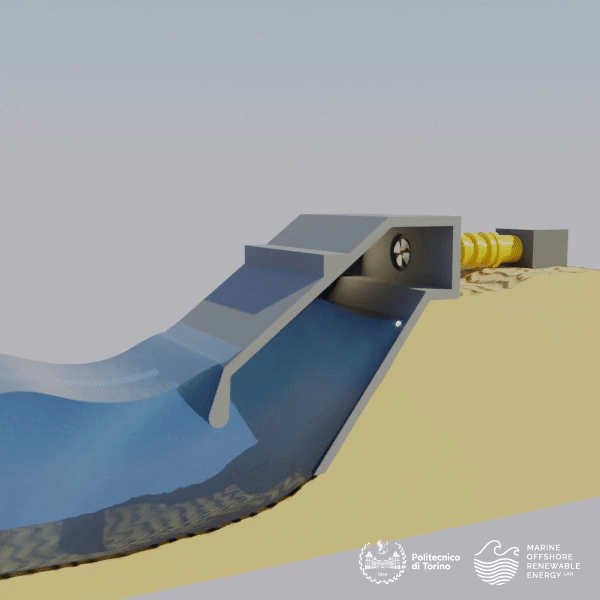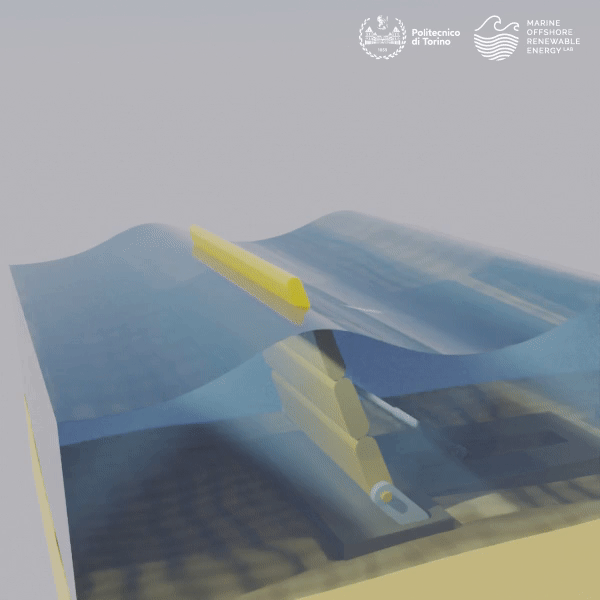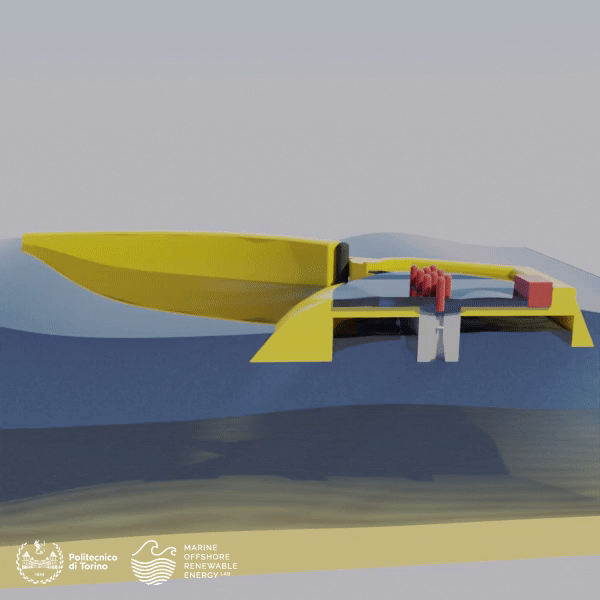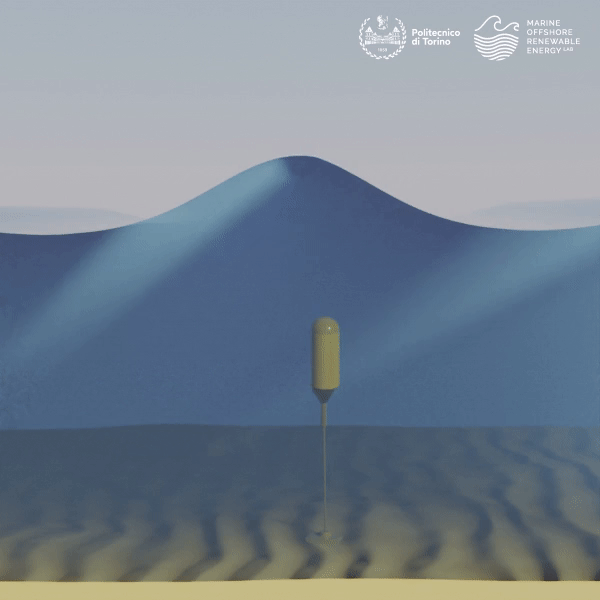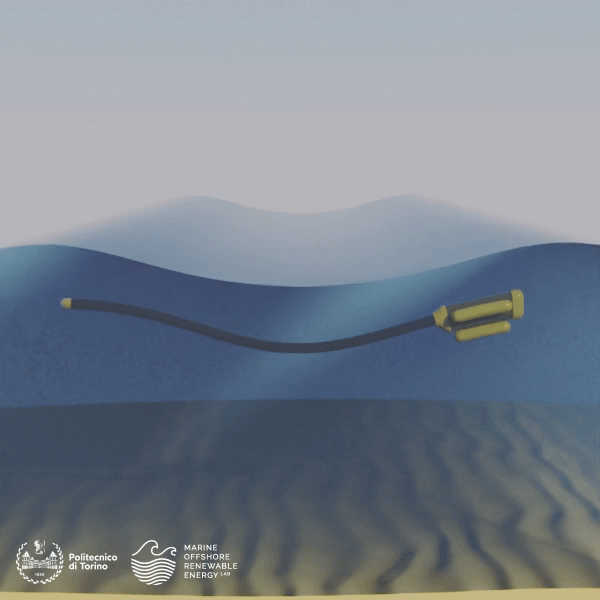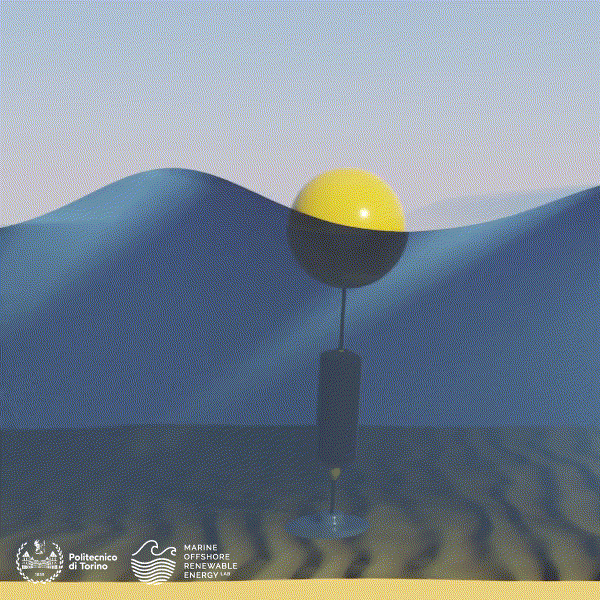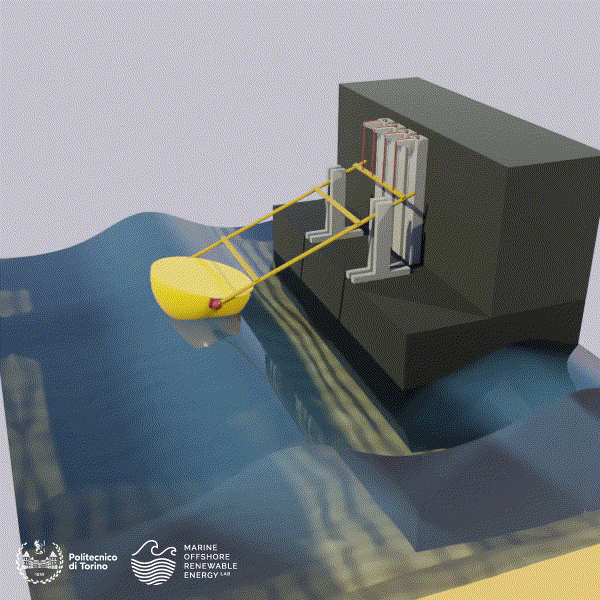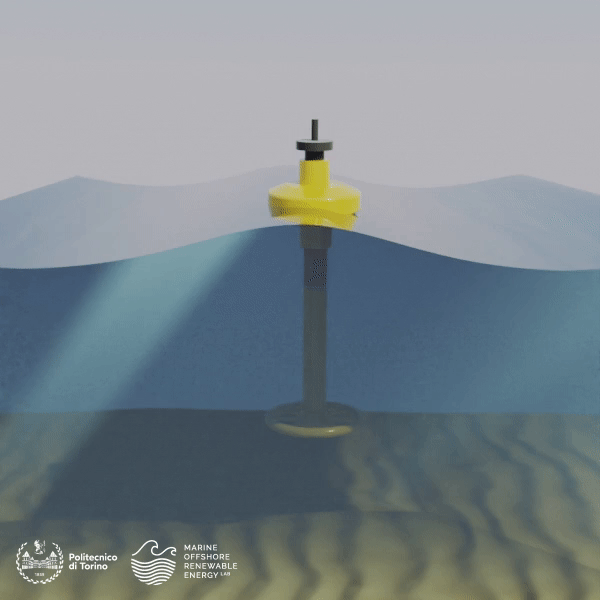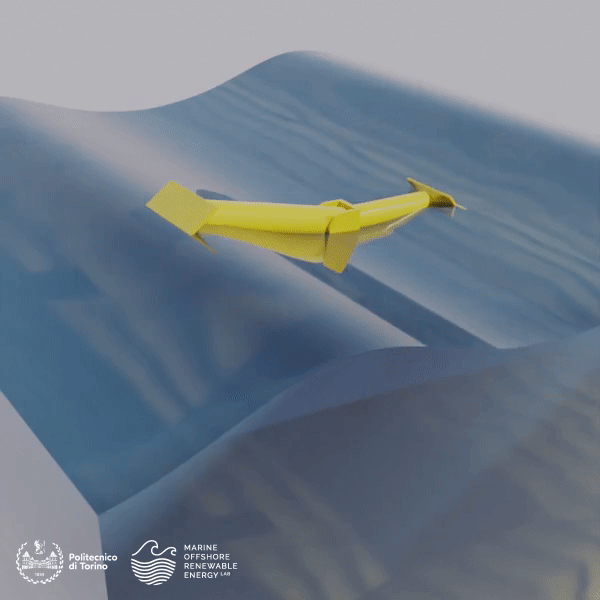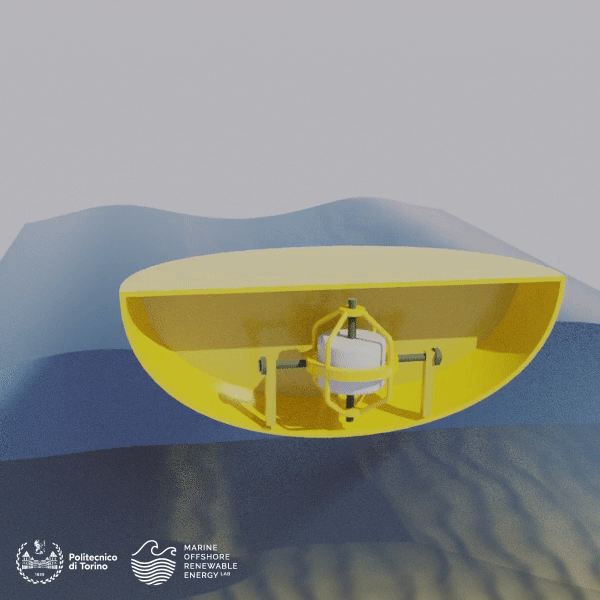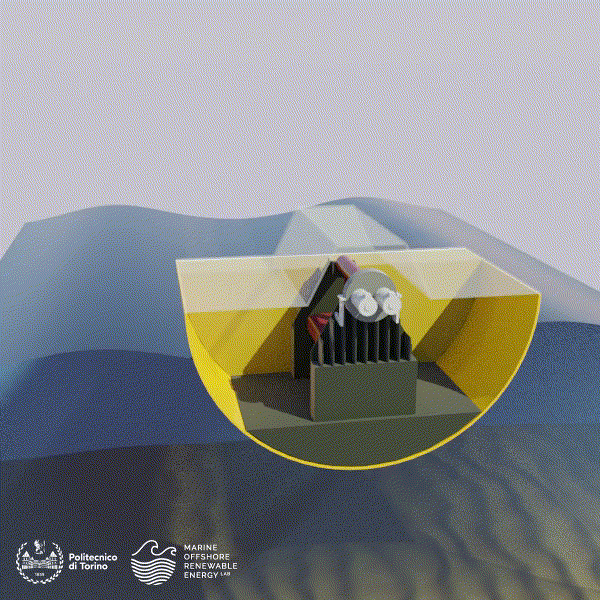Project > Wave Energy Converter GIF Database
A Wave Energy Converter (WEC) is a device capable of harvesting energy from the sea/ocean waves, converting it into a more useful or
commercially valuable form of energy, usually electrical energy.
Such devices make use of different functioning principles and present a wide variety of configurations.
Oscillating Water Column
This type of devices can be located onshore or in deeper water, offshore, and are characterized by the presence of an air chamber.
The air in the chamber is compressed by the rising level of the water due to the waves: the swelling of the water forces the air through an air turbine in order to create electricity.
Oscillating Wave Energy Converter
These devices are typically characterized by structure fixed on the seabed, and an oscillating part connected to the structure. Energy is collected from the relative motion of the oscillating part respect to the fixed structure. The oscillating part can be constituted by oats, aps or membranes.
Overtopping Device
These type of devices are characterized by a long structure that uses waves to fill a water reservoir which is located to a higher position respect to the sea level. The potential energy of the water contained in the reservoir is then exploited by low-head turbines.
This class of devices can be found either onshore or offshore.
Submerged Pressure Differential
These devices use flexible membranes in order to exploit the difference of pressure at different locations below a wave. This pressure differential is then utilized in a closed power take-off (PTO) fluid system, producing a fluid ow that drives a turbine and then an electrical generator. The membranes are then used as a surface between the ocean and the PTO system. These membranes are characterized by a large rigidity and a low mass, allowing the frequency content of the waves to be fully transferred to the fluid of the PTO system.
A submerged converter of this type can be placed both in midwater or on the seafloor, where the influence of the waves is attenuated.
It is possible to observe two possible configurations of this wide class of devices:
- the first (1st) presents a fixed structure tethered to the seabed and an oscillating part that exploits the difference of pressure generated by the travelling waves;
- the second (2nd) presents a long flexible conducts on which the differential of pressure generated by the wave causes a water flux that passes through a low-head turbine on the bow of the device. This second type of device is also called Bulge Wave.
Notional Heaving Point Absorber
Definition in updating
Near-Shore Point Absorber
Definition in updating
Two-Body Point Absorber
These devices float on the free surface of the ocean. They can be placed both nearshore or offshore and are held in position by a mooring system connected to the seabed. The wave energy is absorbed by radiating a wave with destructive interference to the incoming waves. The device is self-referenced, with a floater moving with respect to a more stable spar. A PTO system uses the relative movement of the buoy in order to extract energy. The production of electrical energy can be achieved via linear generators or via generators driven by mechanical linear-to-rotary converters or hydraulic pumps.
Surface Attenuator
These devices behave similarly to floating point absorbers, but are constituted by a number of floating bodies connected to one another. This chain of floating bodies orients itself to the same direction of the incoming wave, and a flexing motion is generated by the waves on the system.
This motion drives hydraulic pumps, ultimately generating electricity.
Rotating Mass Generator
These device are usually floating and are constituted by a vessel in which one or more rotating masses are found. The coupling between the rotation of the mass and the movement of the hull produced by the waves lead to the generation of a gyroscopic torque, which is used by a rotary PTO to extract energy.
A clear example of a rotating mass generator is our project called ISWEC (Inertial Sea Wave Energy Converter). This system transform the wave-induced rocking motion of a buoy into electrical power by means of the gyroscopic effects produced from a spinning flywheel carried inside the buoy.
PeWEC
PeWEC, acronym of Pendulum Wave Energy Converter, in which the assigned system to the energy generation consists by a group of pendulums that through their oscillating motion, determined by hull’s dynamic, transmit a force to PTO, who generates electric energy.
PeWEC is initially aiming at lower energetic closed seas with lower-period waves (e.g., the Mediterranean Sea). When the device is moved by the waves, a relative motion between the hull and the internal pendulum is obtained, mostly due to the pitching motion.
Discover other Internal projects
Wave Energy Converter technologies by Marine Offshore Renewable Energy (MOREnergy Lab), Politecnico di Torino is distributed under a Creative Commons Attribution-ShareAlike 4.0 License.
Please copy this text and share!

